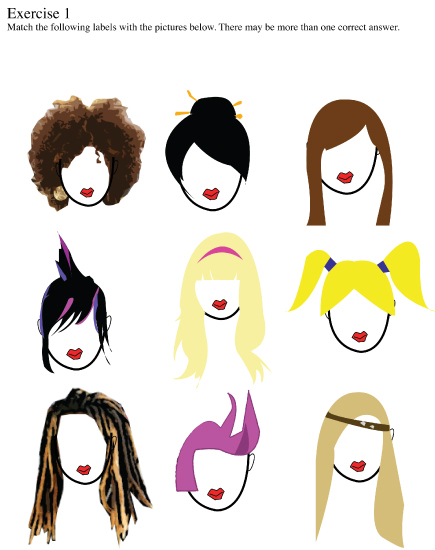For the past 19 years, I have experienced so much anguish and stress when it comes to my hair that I have been tempted to just chop it all off. I came kind of close last year when, out of spontaneity, I took off a good three or four inches in my dorm room. Bad idea. My hair curls, frizzes, tangles, juts out in awkward positions and requires copious amounts of mousse to even temporarily be tamed. I will never have the silky smooth locks that dominate our TV screens, and if I let my hair dry off naturally, I risk my head looking like a yield sign.
Hair is one of those things like makeup and clothing that is too quickly deemed a mark of vanity, with little consideration given to social implications when it comes to its diversity. Hair serves a sort of Darwinian purpose for women, conveying uniformity and authority in a way that few of our attributes can. Its resulting role as a vehicle for assimilation means not only an ability to adapt to environments we find ourselves in but, more significantly, a way to project our ambitions onto our very bodies.
On a more simple level, you have your everyday cliches. None is more infamous than the correlation made between blondes and lack of IQ. In the big picture, though, hair politics can become more tangled than we give it credit for.
Equally revealing of personal tenets is the decision to cover up hair all together. Though oftentimes associated with Muslim women, the decision to conceal hair is seen among Orthodox Jews and Christians as well.
Dina Hammad, a fourth-year mathematics student, is one such Muslim woman. As Hammad explains, “For women, (the head scarf) is basically to protect rights, not only to cover hair. … Every female is like a jewel; true beauty and essence is shown to the husband and close members of the family, not to the whole world.”
A recent Time magazine article described the magnitude of hair’s role when it comes to a larger national and political stage with a figure like first lady Michelle Obama.
Describing the varying styles and decisions when it comes to hair among black women, it emphasized that, “For black women, hair has classification power (witness the connection Don Imus made between hair and sexual promiscuity when he referred to the Rutgers women’s basketball team as “˜nappy-headed hos’). From long and straight to short and kinky ““ and, of course, good and bad ““ these terms become shorthand for desirability, worthiness and even worldview.”
Hair’s role in cultural identity is momentous. Whether it is black women’s hair in the Michelle Obama debates or the famously straight hair in Asian ethnicities, hair is perhaps only second to skin color in gauging ethnic background and heritage. The potentially dynamic nature of hair, when it comes to straightening, coloring, covering or whatever else can be done to alter its natural state, is the key factor differentiating it from skin tone and allowing for somewhat of a removal from one’s background.
As an adaptation mechanism, hair has a malleability that is not characteristic of most of our outward features. According to an Arizona State University study by sociologist Rose Weitz, “Hair, and appearance more generally, matters in everyone’s lives. … There is a wealth of research data that says that attractive people, but especially attractive women, get better grades in school, more dates, marriage proposals, higher salaries, better job offers and so on.”
Looking at our government, it’s difficult not to notice the “Pelosi” and “Clinton” shorter hairstyles that more closely mimic many of their male counterparts’ than our traditional conceptions of what a truly feminine hairstyle is. The haircuts these women sport in a male-dominated Congress demonstrate what is perhaps an aim for the resulting associations between authority, short hair and perhaps, ultimately, masculinity. In 2001, Clinton told Yale College graduates, “The most important thing I have to say today is that hair matters. … Pay attention to your hair. Because everyone else will.”
During the Industrial Revolution in London, the soot blackened trees from increased coal burning dominated the landscape, creating a more favorable habitat to the dark gray peppered moth. This reduced its visibility to predators and meant its light gray counterpart became more susceptible to attack, decreasing a population that had once been in the majority. The situation with humans is nowhere near as grave, but our own adaptations through physical appearance are a spin on this concept, with hair as dynamic a feature as you can have. Your survival may not depend on it, but your career, salary and love life just might.
E-mail Gharibian at cgharibian@media.ucla.edu. Send general comments to viewpoint@media.ucla.edu.
E-mail Gharibian at cgharibian@media.ucla.edu. Send general comments to viewpoint@media.ucla.edu.
